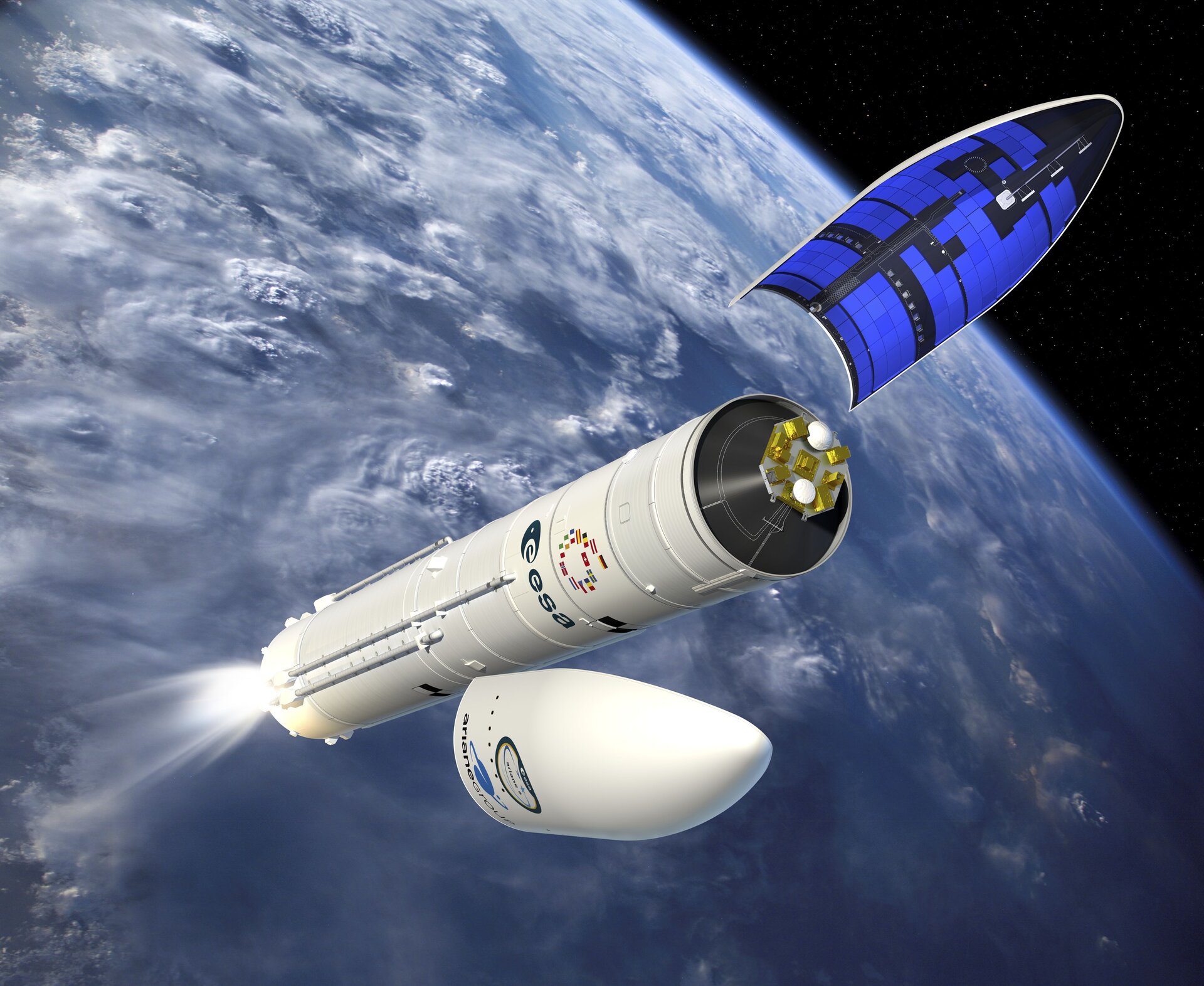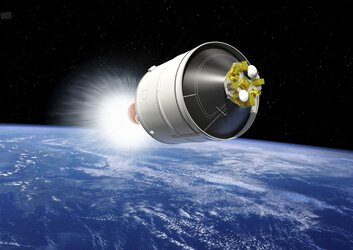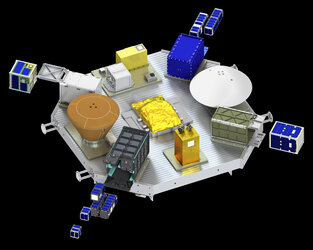Accept all cookies Accept only essential cookies See our Cookie Notice

About ESA
The European Space Agency (ESA) is Europe’s gateway to space. Its mission is to shape the development of Europe’s space capability and ensure that investment in space continues to deliver benefits to the citizens of Europe and the world.
Highlights
ESA - United space in Europe
This is ESA ESA facts Member States & Cooperating States Funding Director General Top management For Member State Delegations European vision European Space Policy ESA & EU Space Councils Responsibility & Sustainability Annual Report Calendar of meetings Corporate newsEstablishments & sites
ESA Headquarters ESA ESTEC ESA ESOC ESA ESRIN ESA EAC ESA ESAC Europe's Spaceport ESA ESEC ESA ECSAT Brussels Office Washington OfficeWorking with ESA
Business with ESA ESA Commercialisation Gateway Law at ESA Careers Cyber resilience at ESA IT at ESA Newsroom Partnerships Merchandising Licence Education Open Space Innovation Platform Integrity and Reporting Administrative Tribunal Health and SafetyMore about ESA
History ESA Historical Archives Exhibitions Publications Art & Culture ESA Merchandise Kids Diversity ESA Brand Centre ESA ChampionsLatest
Space in Member States
Find out more about space activities in our 23 Member States, and understand how ESA works together with their national agencies, institutions and organisations.
Science & Exploration
Exploring our Solar System and unlocking the secrets of the Universe
Go to topicAstronauts
Missions
Juice Euclid Webb Solar Orbiter BepiColombo Gaia ExoMars Cheops Exoplanet missions More missionsActivities
International Space Station Orion service module Gateway Concordia Caves & Pangaea BenefitsLatest
Space Safety
Protecting life and infrastructure on Earth and in orbit
Go to topicAsteroids
Asteroids and Planetary Defence Asteroid danger explained Flyeye telescope: asteroid detection Hera mission: asteroid deflection Near-Earth Object Coordination CentreSpace junk
About space debris Space debris by the numbers Space Environment Report In space refuelling, refurbishing and removingSafety from space
Clean Space ecodesign Zero Debris Technologies Space for Earth Supporting Sustainable DevelopmentLatest
Applications
Using space to benefit citizens and meet future challenges on Earth
Go to topicObserving the Earth
Observing the Earth Future EO Copernicus Meteorology Space for our climate Satellite missionsCommercialisation
ESA Commercialisation Gateway Open Space Innovation Platform Business Incubation ESA Space SolutionsLatest
Enabling & Support
Making space accessible and developing the technologies for the future
Go to topicBuilding missions
Space Engineering and Technology Test centre Laboratories Concurrent Design Facility Preparing for the future Shaping the Future Discovery and Preparation Advanced Concepts TeamSpace transportation
Space Transportation Ariane Vega Space Rider Future space transportation Boost! Europe's Spaceport Launches from Europe's Spaceport from 2012Latest

Ariane 6 first flight fairing separation
Thank you for liking
You have already liked this page, you can only like it once!
Artist's view of the Ariane 6 rocket on it’s first flight as its fairing – a nose cone that splits into two vertically – is ejected, showing its passengers at the top of the launcher. The view shows Ariane 6 already three minutes into launch after Ariane 6 will have jettisoned its two boosters after liftoff from Europe's Spaceport in Kourou, French Guiana.
The passengers Ariane 6 will launch into space on its inaugural flight include several satellites, deployers and experiments from space agencies, companies, research institutes, universities and young professionals on its first flight.
From established players like NASA to students designing their first ever satellite, these missions will measure gamma rays, track wildlife, test self-healing solar cells, confirm the theory of black body radiation and more. There's a smart-farming satellite, a radio beacon demonstrator, experiments that will remain attached to the rocket's payload ‘adaptor’ and even capsules destined to reenter Earth’s atmosphere to test new materials – Ariane 6’s first flight will be packed with technology as its first payloads are sent on their way into space.
This plethora of missions is being supplied by three types of organisations: commercial companies, space agencies and universities. Together they have been building hardware to test and prove their technology works in space; satellites to measure weather on Earth or in the Solar System; study the Sun and perform other science experiments.
The new heavy-lift rocket Ariane 6 has been designed for all possible futures, and at its core is maximum versatility. Ariane 6 can put any satellite or payload into any orbital path. This is made possible with the new restartable Vinci engine that will power up the Ariane 6 upper stage again and again, stopping and starting to insert spacecraft into any orbit they need to be. The launcher stores enough fuel for a final burn, once its passengers are deployed, to deorbit and reenter safely back through Earth’s atmosphere.
-
CREDIT
ESA - D. Ducros -
LICENCE
ESA Standard Licence

Artist's view of the Ariane 6 upper stage in flight…

Ariane 6 first passengers – with names

Ariane 6 first passengers

Artist's view of Ariane 6 – Flight Model-1 just the logos















 Germany
Germany
 Austria
Austria
 Belgium
Belgium
 Denmark
Denmark
 Spain
Spain
 Estonia
Estonia
 Finland
Finland
 France
France
 Greece
Greece
 Hungary
Hungary
 Ireland
Ireland
 Italy
Italy
 Luxembourg
Luxembourg
 Norway
Norway
 The Netherlands
The Netherlands
 Poland
Poland
 Portugal
Portugal
 Czechia
Czechia
 Romania
Romania
 United Kingdom
United Kingdom
 Slovenia
Slovenia
 Sweden
Sweden
 Switzerland
Switzerland
























